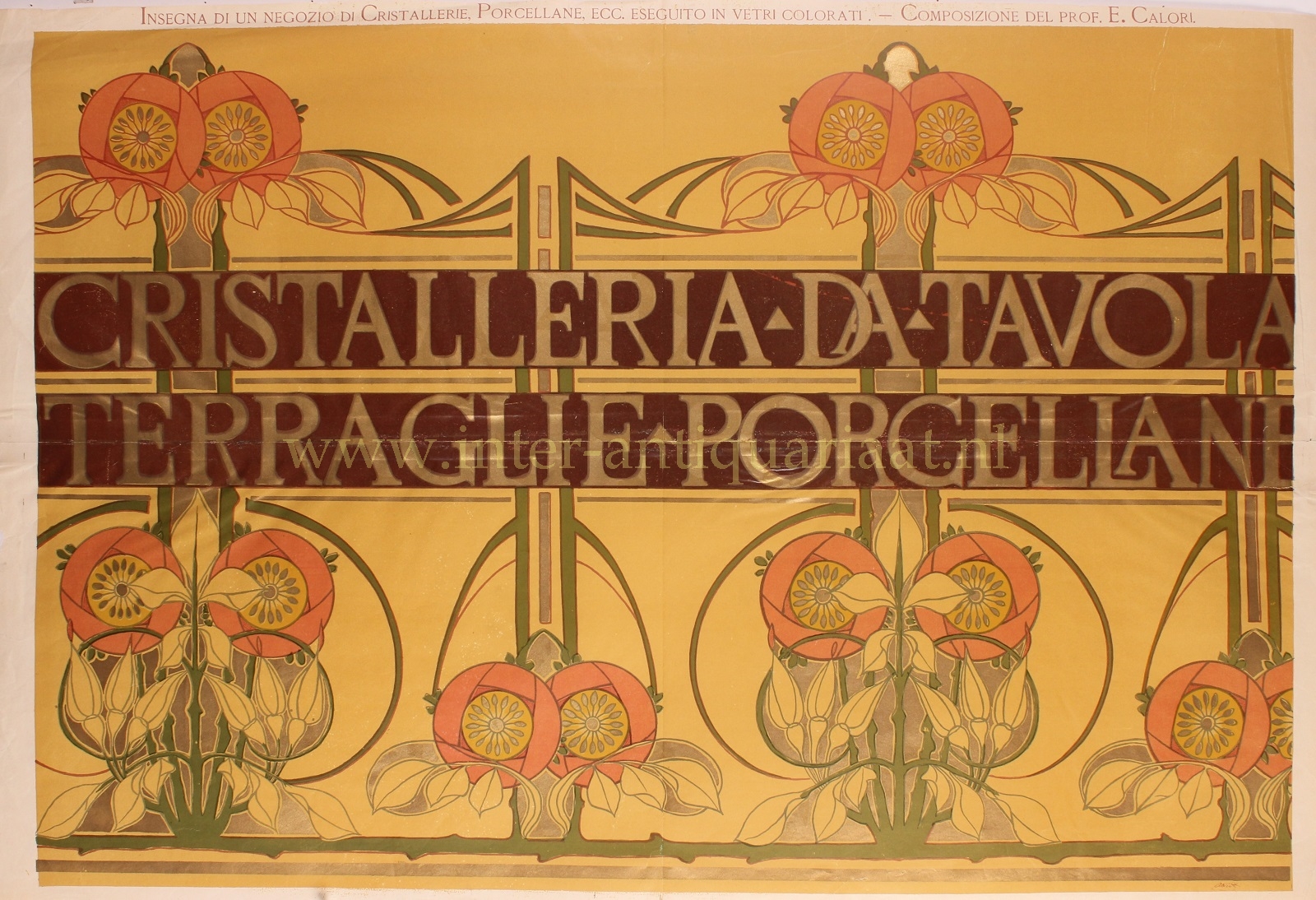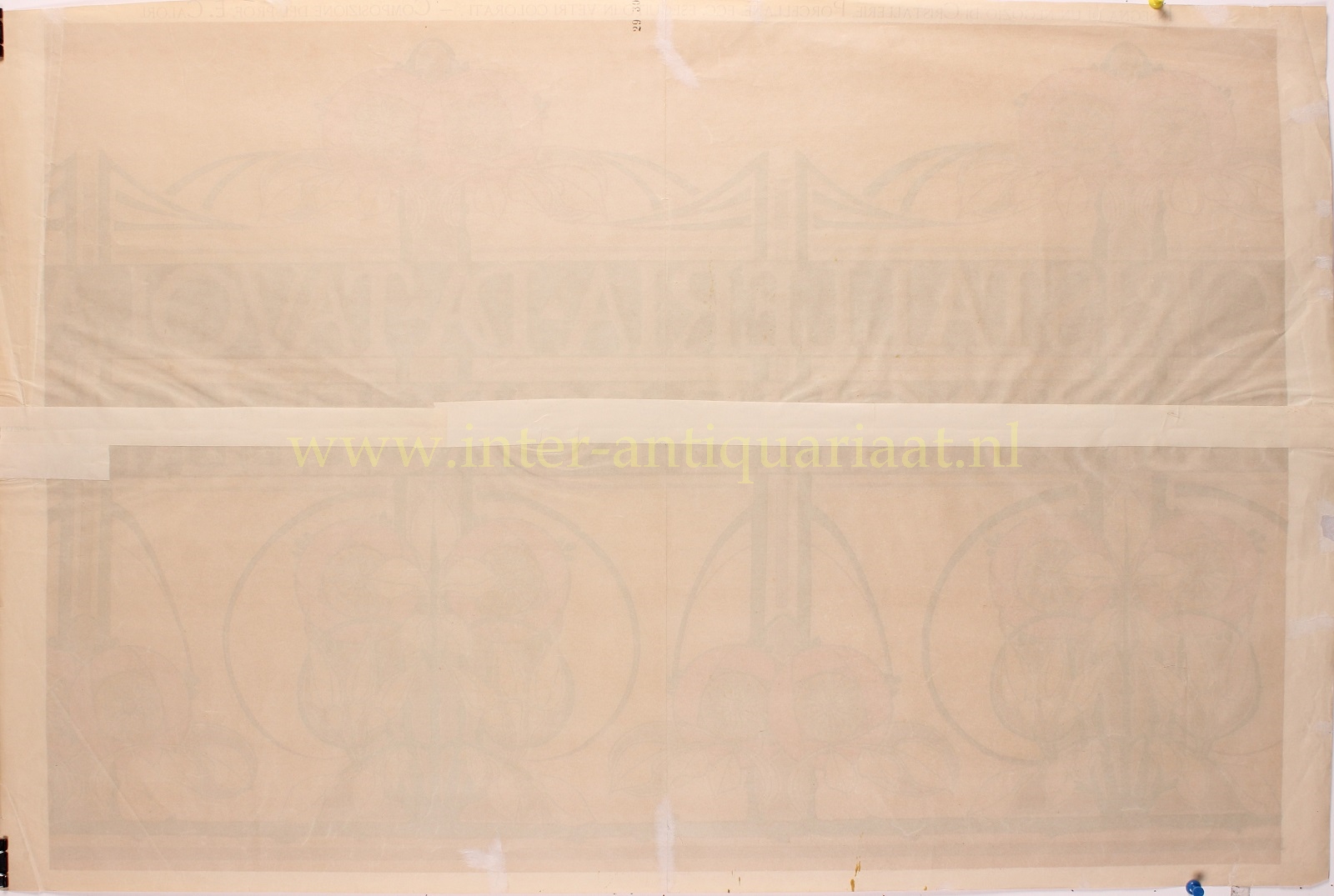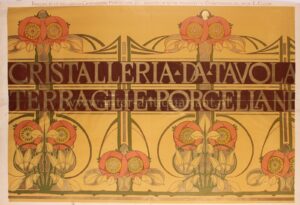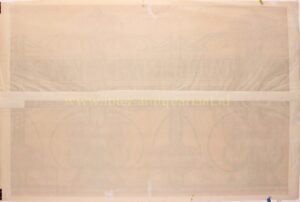“Cristalleria da Tavola Terraglie Porcellane”, advertising sign for a shop selling table glassware, earthenware, and porcelain, design by E. Calori to be executed in coloured glass. Colour lithograph made around 1902 for “Arte italiana decorativa e industriale” a monthly periodical published under the patronage of the Italian Ministry of Agriculture, Industry and Trade. Size (paper): 59 x 88 cm.
The “new style” that emerged and spread in Europe between the late 19th and early 20th centuries is defined by different terms depending on the country where it is applied. In Milan and Italy, it is called Liberty. The term derives from the name of the company of Arthur Lasemby Liberty, which was opened in London in 1857 and had a shop in Milan’s Galleria. During those years, the company spread new designs through its products. Initially, when people in Milan talked about Liberty, they specifically referred to that particular type of production. Only later did the term come to assume the meaning of the style corresponding to Art Nouveau in France, Jugendstil in Germany, Secession in Austria, or Modernisme in Catalonia.
Among the various applications in the fields of architecture, objects, furnishings, fabrics, and advertising, glass in general, and stained glass in particular, was one of the preferred materials for artisans, artists, and designers devoted to Liberty. It best expressed the common theme of all decorations: the botanical or “floral” style. Trees, flowers, leaves, winged insects, and animals were considered archetypes of beauty, inherently significant forms, often expressed in a rhythmic formula characterized by free development that, in some cases, extended to rigorous asymmetry.
As a result, glass-making activities experienced a significant increase. The number of glass manufacturing industries producing plates of glass multiplied, and they also began producing important quantities of frosted glass for furniture and window displays, acid-etched and painted glass, as well as colored glass for the creation of increasingly sought-after stained glass windows. The number of factories producing glassware for homes and public places such as cafes and restaurants, catering to the bourgeoisie of Milan, grew considerably, along with articles for lighting purposes.
Advertisers also make their definitive appearance, with companies that will create the most beautiful and famous stained glass windows for Milanese clients. In addition to “Beltrami G. e C.” (gold medal at the Sacred Art Exposition in Lodi in 1901, Grand Diploma of Honor at the Decorative Art Exposition in Turin in 1902, and Grand Gold Medal at the Venice Exposition in 1903), there is “Corvaya, Bazzi e Comp.” offering artistic glass decoration and stained glass with a patented process imitating antique and modern stained glass, using lead, brass, etc.; “Fontana Luigi & Comp.” with painted and kiln-fired artistic glass for churches, apartments, stained glass windows, galleries, shops, etc.; and “Brusotti Luigi,” specialized not only in artistic stained glass but also in the creation of advertising signs and plaques.
This design by Calori was such an advertising sign.
Price: Euro 475,-





